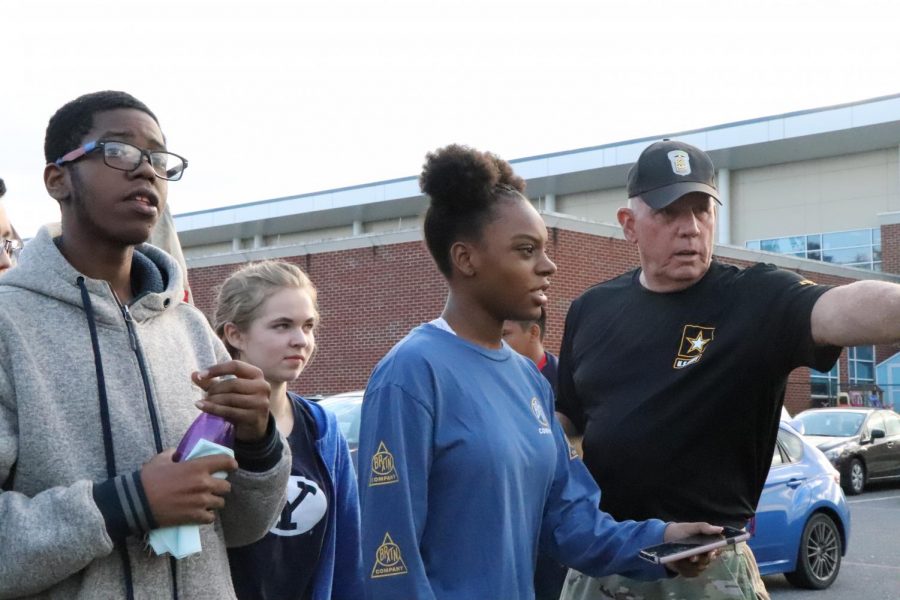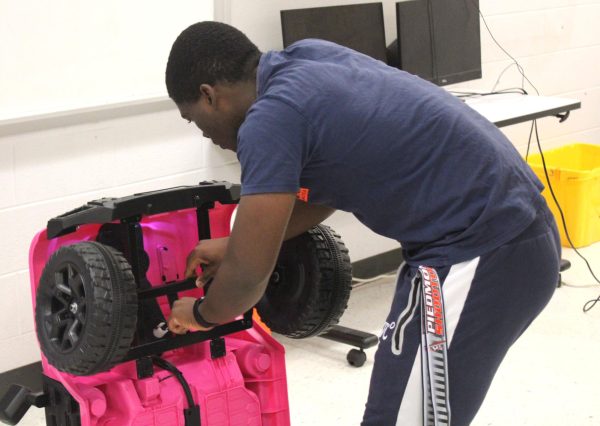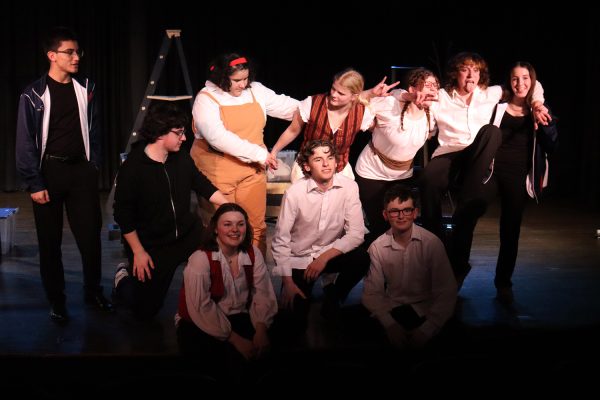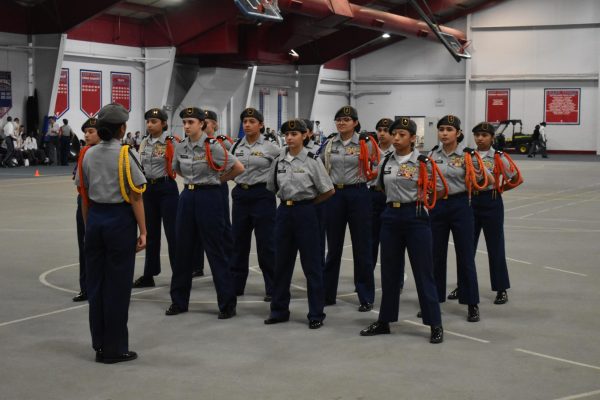English class participates in JROTC Workshop
Sergeant Major directs students to the different activities. A collaboration between Mary Strickler and the JROTC program was used to give students a real life experience of the book ‘Into Thin Air.’
On September 26, JROTC and Mary Strickler’s English class collaborated to make a book come to life. In English, many students read Into Thin Air by Jon Krakauer. This is Krakauer’s account of his experience in the 1996 Mount Everest Disaster. Students went through four stations in which they furthered their understanding of the book through what Strickler called “experiential learning.”
“…[I’m excited for students] to challenge themselves, take a risk and talk about what drives us to take risks,” Strickler said.
In one station, Sergeant Major Russel Wilder set up a headquarters that you would typically have when climbing Everest. There, Wilder talked about several cold weather injuries trekkers may face when climbing, such as frostbite and altitude sickness.
In the second station, students hiked “Mount Blue Streak.” Students had to work together to get up the hill and plant their flag. Stricker’s students had painted sherpa flags in class. The catch was that you could only breathe through a straw. The point of this was to simulate the experience that you may have when hiking Everest. Junior Calayiah Stuart participated in this station.
“Climbing the hill wasn’t [difficult], just breathing wise,” Stuart said.
In the third station, JMU brought their rock wall for students to climb.
The fourth station was a six man ski station. Students had to work together and trust their teammates to get the boards to move by walking together. Sophomore Sophia Alvarez is in JROTC and was helping out at the stations.
“You…basically walk to get two boards to move when there’s multiple people on it,” Alvarez said.
The point of this station was to emphasize the importance of teamwork. When actually climbing Everest, a mistake could cause you to be severely injured or in extreme situations, die.
“You have to help each other or you’re doomed,” Strickler said.
After the workshop, guest speaker Christy Bradburn came to speak to JROTC and English students.
“I really enjoyed my visit to HHS. The students were attentive and asked great questions,” Bradburn said.
Bradburn works at JMU and is in the School of Integrated Sciences. She trekked to Everest base camp and shared her experiences with students.
“I talked about the physical landscape of the Himalayas, including the fact that it was not always obvious that Mt. Everest was the highest mountain in the region, given the height and proximity of other surrounding mountains. I also talked about the local culture including: Tibetan Buddhism (and prayer flags and prayer wheels) the importance of the yak (as a source of milk, fiber, fuel – from yak dung, and as a cargo transport system) and the importance of tourism as a source of income for local people. I also discussed some [of] the challenges related to trekking at a high altitude,” Bradburn said.








